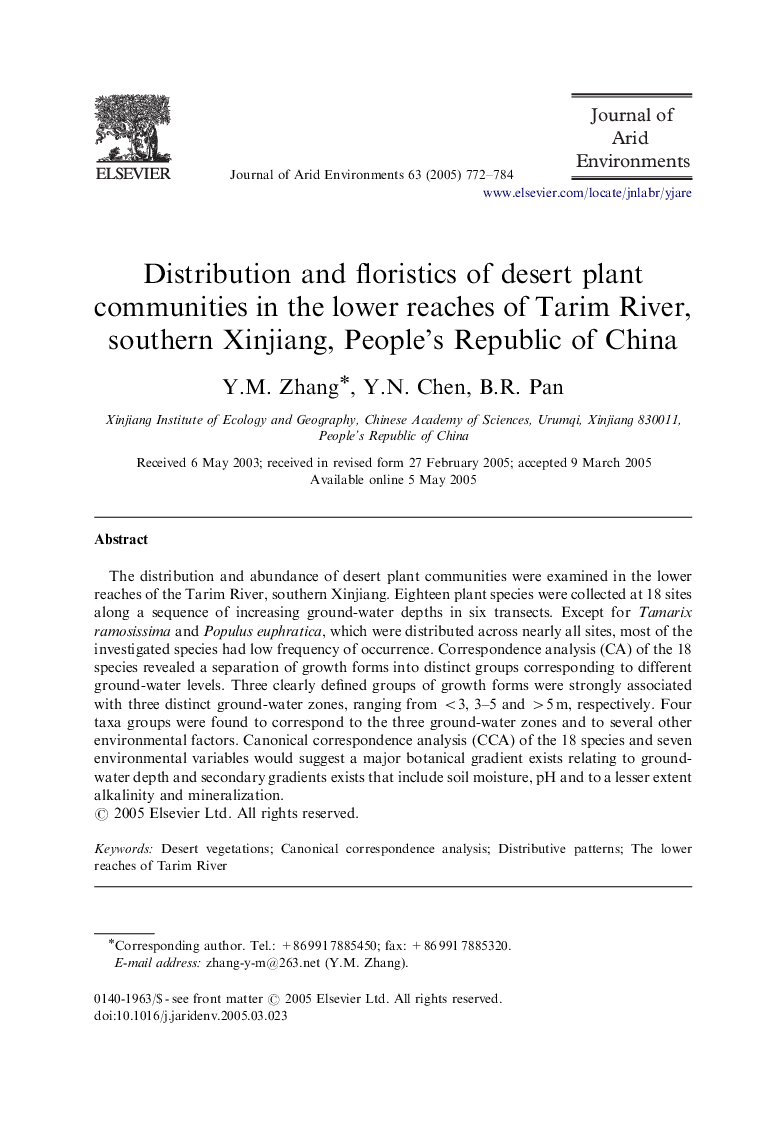| Article ID | Journal | Published Year | Pages | File Type |
|---|---|---|---|---|
| 9447858 | Journal of Arid Environments | 2005 | 13 Pages |
Abstract
The distribution and abundance of desert plant communities were examined in the lower reaches of the Tarim River, southern Xinjiang. Eighteen plant species were collected at 18 sites along a sequence of increasing ground-water depths in six transects. Except for Tamarix ramosissima and Populus euphratica, which were distributed across nearly all sites, most of the investigated species had low frequency of occurrence. Correspondence analysis (CA) of the 18 species revealed a separation of growth forms into distinct groups corresponding to different ground-water levels. Three clearly defined groups of growth forms were strongly associated with three distinct ground-water zones, ranging from <3, 3-5 and >5Â m, respectively. Four taxa groups were found to correspond to the three ground-water zones and to several other environmental factors. Canonical correspondence analysis (CCA) of the 18 species and seven environmental variables would suggest a major botanical gradient exists relating to ground-water depth and secondary gradients exists that include soil moisture, pH and to a lesser extent alkalinity and mineralization.
Keywords
Related Topics
Physical Sciences and Engineering
Earth and Planetary Sciences
Earth-Surface Processes
Authors
Y.M. Zhang, Y.N. Chen, B.R. Pan,
